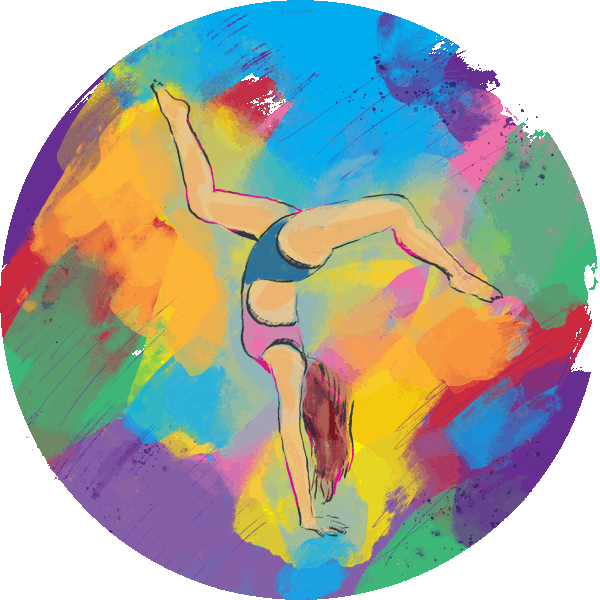Brianna * and I met to discuss her involvement with secularized meditation on a warm weekday afternoon. We agreed to meet on a shady patio at the Farmers Market, a popular destination in mid-town Los Angeles.
Brianna, a management consultant, had told me she would be coming from a workout, and that I should look for a woman in her late 20s with long auburn hair wearing a gray tank-top and running tights.
She was instantly recognizable, with the arms of someone who manages a handstand with aplomb, who can lob a medicine ball into next Tuesday.
“It’s kind of like, you know, this is for hippies, and I’m not a hippie.”
Not surprisingly, self-discipline and a no-nonsense approach to life quickly emerged as two of Brianna’s strongest character traits.
“I started out very skeptical,” Brianna said of her initial experience with a university-based research center that has become a leader in teaching secularized mindfulness practice. “It’s kind of like, you know, this is for hippies, and I’m not a hippie.”
Brianna said that as she deepened her level of participation in the mindfulness program and cultivated her own regular meditation practice, she noticed changes in herself that she liked.
“It’s definitely an effective tool,” she said. “Being able to distance yourself in a healthy way from emotions or experiences, you don’t have to rationalize everything. You just experience it and move on.”
Another surprise for Brianna was the feeling of camaraderie that developed within the cohort of people who were participating in the weekly guided meditations that anchored the mindfulness training.
“Once you get there,” she said, “even if there’s traffic or trouble parking, you’re so relieved to be there, and I’ve never regretted showing up, at all.”
And though no one in the group has ever mentioned rules about cellphones or other distractions, Brianna said that a tacit understanding of the specialness of their time together eventually infused each gathering.
“You know, everyone is just so thankful and so like, in it,” she said. “Nobody checks their phones—it’s like, sacrilegious to have your phone anywhere where anyone can see it. Everyone is just completely fully present, and it’s so great.”
She added, “It’s such a loving atmosphere without being, like, you know, touchy-feely. It’s not like we’re all like, crying and giving hugs all the time. It’s just great energy.”
Brianna, a Southern California native, grew up nominally Catholic and still believes in what she calls “a higher power.” But rather than identifying that power as the God of traditional Christianity, she said she equates it with the sense of awe she feels when she is in nature or when she contemplates the infinite vastness of the night sky.
As we began to wrap things up, I asked Brianna whether there was anything important about her story that we’d not covered. “Yes,” she replied. Then she told me that over the past year and a half, she had participated in three ayahuasca rituals.
“I was super skeptical about that too,” she said. “But now I’m a believer.”
Ayahuasca is a hallucinogenic brew that is having a heyday in the United States. The thick, earthy tea is concocted from a complementary pair of plants that grow in the rain forests of the Western Hemisphere. Depending on whom you ask, ayahuasca—called “the mother” by devotees—opens the doors of perception, provides a window onto the soul, lures naïve Westerners into the heart of darkness or crams a decade of psychotherapy into a few hours. It often involves intense purgative vomiting, visions and out of body experiences.
The legal status of ayahuasca is ambiguous in the United States, though it has been used in shamanic rituals for centuries. Rolling Stone, Fusion, VICE and other trend-spotting news outlets have posted stories about spiritual adventurers tripping on the stuff during private rituals in hipster outposts like Brooklyn and Berkeley, as well as in remote jungle settings in Central and South America. A recent piece in The New Yorker framed the popularity of ayahuasca as just another wellness fetish in the current “Age of Kale.” Yet, even a veterans’ group has turned to ayahuasca to treat depression, addiction and post-traumatic stress disorder.
While Brianna did not share any trauma as part of her journey, her interest in having such an intense physical and emotional experience is exemplary of how many young adults who have dropped out of organized religions are still looking for experiences of self-transcendence.
“It was one of the best experiences in my entire life. Perhaps the best.”
While all three of Brianna’s forays into shamanic medicine were useful for her, she said that her most recent experience was life-altering.
“It was one of the best experiences in my entire life,” Brianna said. “Perhaps the best.”
She described lying on a meditation mat in a state between consciousness and unconsciousness while the shaman chanted, drummed and made his way around the room to administer healings to Brianna and the other participants. During the last ritual she attended, she said experienced “pure joy” for several hours.
Ayahuasca, moreover, is compatible with the discipline and insights she’s developed through her meditation, Brianna said.
“They’re definitely complementary,” she said. “The idea is that ayahuasca, the plant, she gives you what you need at the time. She can be harsh sometimes or she can be very loving. I’ve only had good experiences so far.”
Brianna said that the goal of life is the happiness that comes from being a good person—someone who works to create productive lives for herself and others. For her, spiritual experiences—but not formal, organized religions—are essential to this goal.
“I know that there’s some higher power,” Brianna said. “But do I think we have to follow any specific rules, and is there an afterlife? Like, no.”
* Nick Street, the author of this profile, uses a pseudonym to protect the identity of his interview subject.

